Sony E 18-55 mm f/3.5-5.6 OSS
3. Build quality and image stabilization
All the lenses feature similar diameter and length. Only the Olympus kit device seems to be rather shorter – by one size when collapsed and by more when zooming. When it comes to the weight, the Sony E 18-55 mm f/3.5-5.6 OSS is a bit physically lighter than the Samsung kit which is the heaviest here. Another Olympus kit without image stabilization, as the camera sensor is stabilized is the lightest of all.
The photo below shows the Sony E 18-55 mm f/3.5-5.6 OSS positioned next the Olympus M Zuiko Digital 14-42 mm f/3.5-5.6 ED – both in the transport position.
Please Support UsIf you enjoy our reviews and articles, and you want us to continue our work please, support our website by donating through PayPal. The funds are going to be used for paying our editorial team, renting servers, and equipping our testing studio; only that way we will be able to continue providing you interesting content for free. |
- - - - - - - - - - - - - - - - - - - - - - - - - - - - - - - - - - - - - - - - - - - - - - - -
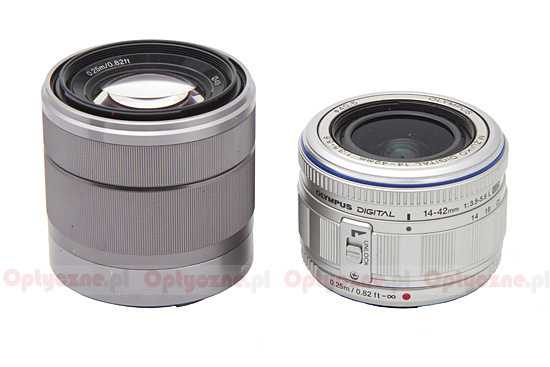 |
We can compare the dimensions of the body-plus-kit set looking at the photo below.
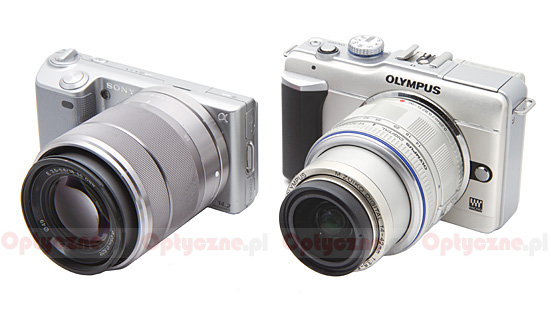 |
The lens extends when zooming towards the long end of the zoom range and is the longest at 55 mm as it is shown in the photo below.
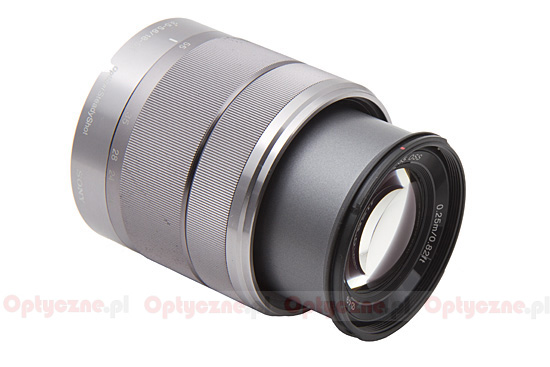 |
The tested lens’s barrel is made of metal (mag-alloy) but, like we wrote in the Sony NEX-5 camera test, you can have some reservations concerning the solidity of the used material. During the period of three weeks of normal, regular usage we already noticed some scratches on the ribbed zoom ring.
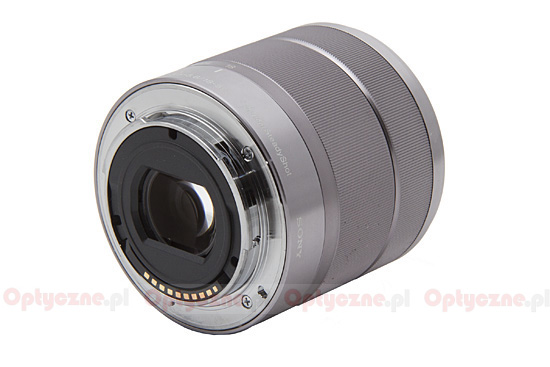 |
The lens starts with a metal mount; immediately afterwards on the barrel you see its name and a focal length marking showing the focal length actually chosen. Then we can find a big ribbed zoom ring with a simple scale at the beginning – there are positions for 18, 24, 28, 35 and 55 mm. The ring is well-damped but its work could have been a bit smoother. Next, there is a manual focus ring, a bit narrower but still comfortable. At the end we see a non-rotating inner lens tube which extends while zooming. It ends with a filter thread 49 mm in diameter.
The optical construction consists of 11 elements in 9 groups. The producer used 3 aspherical elements. Inside the lens you can also find a circular aperture with seven diaphragm blades which minimum and maximum values depend on the focal length used and are presented in the chart below:
| 18 mm | 31 mm | 55 mm | |
Minimum |
|||
Maximum |
Buying the lens you will find both caps and a petal-type lens hood included in box.
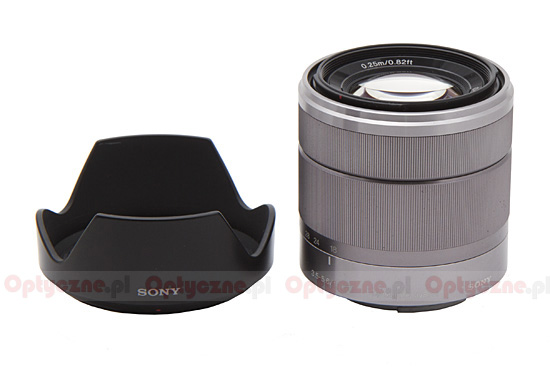 |
Stabilization
Sony resigned from sensor stabilization in the NEX system cameras. The task of eliminating the shaking of our hands fell on the lenses and the system kit of course features such a function. Does it work better than e.g. the sensor stabilization of Olympus Micro Four Thirds cameras?
The stabilization efficiency test we conducted at the focal length which was the equivalent of 50 mm on full frame. We took several dozen expositions with the exposition time ranging from 1/80 to 1/5 of a second and the stabilization on and off. Then we determined the percentage of fuzzy photos for every exposure value. That percentage was presented as an exposure value function expressed in EV. The zero EV point in this case is the equivalent of 1/80 of a second. The results can be seen on the graph below.
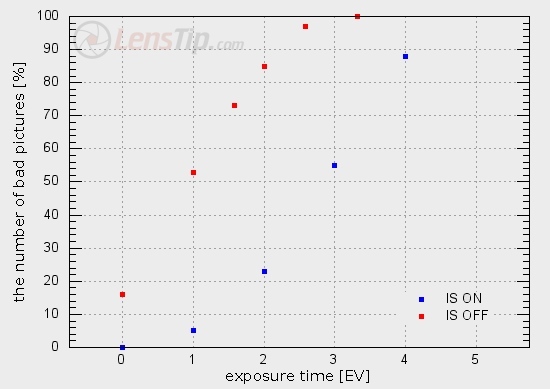
The maximum distance between the curves amounts to 2 EV and such is the value of the stabilization efficiency. That value is similar to results reached by sensor stabilization used in mirrorless Olympus models.






